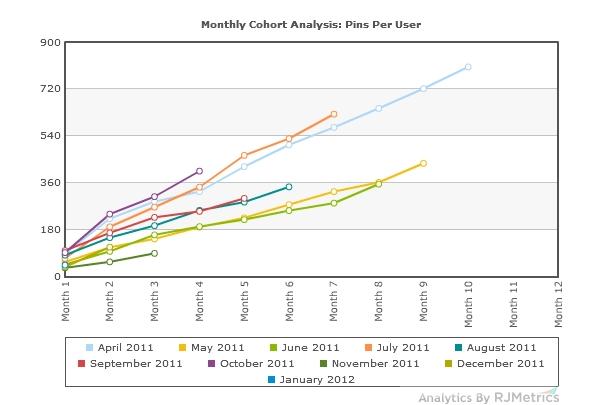Understand the rules of engagement with Pinterest

Kelley Connors
KC Health
In this article Kelley Connors explores engagement with Pinterest and compares it with engagement with Twitter. She discusses the benefits of using Pinterest as a marketing tool especially when directing messages to women.
Since healthcare is such a personalized experience, and 90% of healthcare decisions are made by women, I find it interesting that more healthcare marketers aren’t exploring Pinterest. Given the regulatory constraints of product labelling, Pinterest avoids this concern, as you focus on what matters most to your audience as you work with Pinterest to generate insights, the holy grail in marketing health to women today.
 ,
"For healthcare marketers, Pinterest also gives you the chance to human-ize your mission..."
 ,
For healthcare marketers, Pinterest also gives you the chance to human-ize your mission through boards that reflect your culture, your team, your advocacy partners, and your values. While other social tools also allow for humanizing your brand, Pinterest lends you the unique opportunity to display the “WHO” of your brand right next to the “WHAT.” Is your brand committed to giving to women’s health organizations or to community events?
How Pinterest Creates the Love for Healthcare Marketers:
The viral nature of repins
Once you have pinned a picture, you want women to repin in, or share it, with their own followers. Repinning means that engagement is happening through sharing. The number of repins is extremely high for Pinterest as women continue to engage and build boards, not drop off.
Remarkably, over 80% of pins are repins, demonstrating the impressive level of virality at work in the Pinterest community. By contrast, a study conducted by HubSpot at a similar point in Twitter’s history found roughly only 1.4% of tweets were retweets.
Figure 1: Over 80% of pins are repinned
A study of Twitter vs Pinterest concluded that among most companies, even among highly successful ones, there is what is known as a decay rate because there is some natural attrition, causing the incremental engagement of the typical user to drop off.
But that doesn’t appear to be the case with Pinterest. Instead, the lines show little to no decay. Their slopes remain consistent, indicating a net attrition rate of close to 0%.
Why no decay in engagement? The reason, according to the study, is possibly one of two factors: (1) no one who starts using Pinterest ever stops, or, more likely (2) users who continue to use Pinterest become so much more engaged over time that their activities fully make up for those users who quit the site.
 ,
"...when Twitter was at a similar point in its life cycle (late 2009), Twitter’s decay rate was twice that of Pinterest..."
 ,
By contrast, when Twitter was at a similar point in its life cycle (late 2009), Twitter’s decay rate was twice that of Pinterest, with user activity (measured by tweets) rapidly plummeting to roughly 20% before stabilizing, according to a 2009 analysis of Twitter.
So, how can you as a health marketer use Pinterest?
1. Share your brand essence and values through Pinterest. Let your brand’s personality, curiosity, and creativity appear in its boards — and it'll come right back to you in repins and click-throughs.
2. Show how much you care about women as consumers, patients, caregivers. Follow them. Women don't care how much you know until they know how much you care. Replace "care" with "pin" — and you've got a roadmap. Draw inspiration from other pinners and repin their work. They'll appreciate your attention, some will follow back and eventually start repinning your photos.
3. Segment your boards to attract your specific demo. Pinterest lets you keep multiple boards (ways to organize your photos), which users can choose to follow individually or all together. Use different boards to showcase your brand's dynamism and attract different types of followers.
4. Hashtags and keywords help to find you. Name your boards and add descriptions to your pins. Including hashtags (#keyword) will also add your photos to galleries under that term, spreading your reach.
5. Are you at a medical meeting or women’s health event? Pin and repin on the go. Pinterest's iPhone app lets you pin what you see on the fly.
Share something new with women related to wellbeing. Repin your advocacy group partner logos to connect women to sources of education, empowerment and information. If you’d like to give us some lifestyle tips, we love those too! Infographics are a great visual example of what women love to share.
Finally, use Pinterest as a marketing research tool and create a brand board to gather insights and lessons learned, or spread how-to's of your own!
About the author:
For more about HerRules and your tools in a socially-inspired world, go to KC-Health.com and download the white paper.
To learn more about how your brand can engage with women, not just advertise to them, download the new white paper called {Her}Rules of Engagement. Produced by Kelley Connors, MPH, The Brand Engagement Champion in Women’s Health, the white paper is a springboard to help you build influence, engagement, loyalty and sales with women.
Why is there less decay in engagement with Pinterest compared with Twitter?













